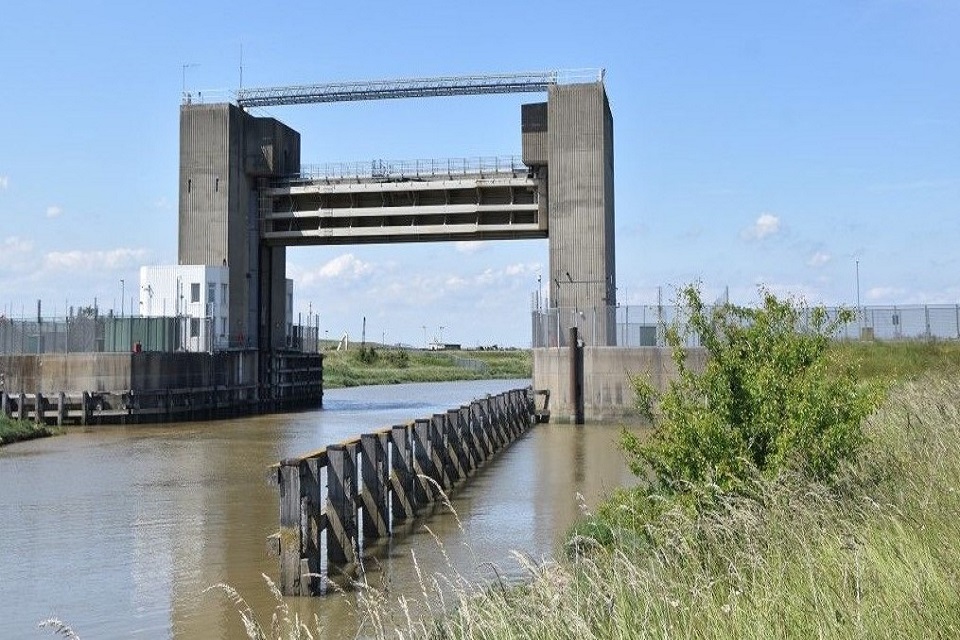Have your say on future of Thames Estuary flood risk
Views sought on updated plans to boost flood resilience in face of climate change.

The Environment Agency wants your views on protecting London and the Essex and Kent coasts that border the River Thames
Londoners and people in north Kent and south Essex are getting the chance to shape the response to increased flood threat as climate change threatens to create higher sea levels.
The Environment Agency and a number of other bodies are looking towards the end of the century to ensure homes, businesses and critical services from Teddington to Sheerness and Southend remain protected by updating the Thames Estuary 2100 Plan.

Dartford Creek Barrier's steel gates lower when flooding is likely
The Environment Agency is calling on communities and organisations to play their part in updating the Thames Estuary 2100 Plan by giving their views on the new flood risk strategy.

Southend Pier reaching out into the Thames - the eight-week public consultation is after views on how to protect this part of south Essex
With more than 3,000 flood defences - including the iconic Thames Barrier - protecting 1.42 million people from flooding in the London area, there is still more to do.
The Environment Agency is updating the plan to increase resilience and still manage flood risk in the most cost-effective way. A review of the latest scientific evidence found that the strategy continued to set out a robust approach to future flood risk.
Baroness Brown DBE FREng FRS, chair of the Climate Change Committee’s adaptation committee and chair of the advisory group that reviewed the Thames Estuary 2100 Plan, said:
Significant sea-level rise is now inevitable, and even reaching global net zero – imperative to limit future warming – will not stop this rising tide.
The plan aims to protect communities from flooding while reshaping riversides and enhancing nature.
Only 12 per cent of more than 3,000 flood defences are the responsibility of the Environment Agency, so it is essential that the Thames Estuary 2100 Plan is a team effort, owned by everyone with an interest in our river.
Julie Foley, the Environment Agency’s director for flood strategy and national adaptation, said:
We’ve operated the Thames Barrier to protect London more than 200 times in the past 40 years.
But the climate is changing and causing sea levels to rise. Our evidence shows that could be by more than a metre by 2100.
While we expect the Thames Barrier to continue to protect London until 2070, we need to plan ahead now to keep London protected from storm surges. By 2040 we will make a decision on the preferred option for 2070 and beyond.
Following recent roadshows in Canvey Island and Dartford, three more public events will be held for people to see the updated plans and discuss them with specialists from the Environment Agency and other organisations involved in protecting London, south Essex and north Kent.
The Thames Estuary 2100: Shaping the future of the Thames Estuary:
- Wednesday 5 October: 3pm – 6pm: The Forum at Greenwich, Trafalgar Road, Greenwich SE10 9EQ
- Tuesday 11 October: 4.30pm – 8pm: Thameside Theatre, Orsett Road, Grays RM17 5DX
- Tuesday 25 October: Time TBC: Portsoken Community Centre, Little Somerset Street, London E1 8AA
The consultation is open until 20 November 2022.
Published in 2012, the Thames Estuary 2100 Plan was the first flood risk management strategy to adapt to different climate scenarios. A recent review of the plan showed it was still a robust approach.
The plan covers 2,400km of roads, almost 4,000 electricity substations, 140 mainline and Tube stations and London City Airport and London Heliport.
Experts in flood protection want local people to help update the existing strategy to reduce flood risk, to safeguard communities along the estuary.
The review also found that some tidal defences needed to be raised earlier than originally thought, some within the next 20 years. It’s crucial that we act now and work together – no organisation can deliver this ambitious strategy alone.
Paper copies of the consultation can be requested from thamesestuary2100@environment-agency.gov.uk and returned via email or sent to Thames Estuary 2100 Plan consultation, Environment Agency, 2 Marsham Street, London, SW1P 4DF. The questionnaire will close at 11.59pm on 20 November 2022.
You can read the original Thames Estuary 2100 Plan here along with the 10-Year Review.